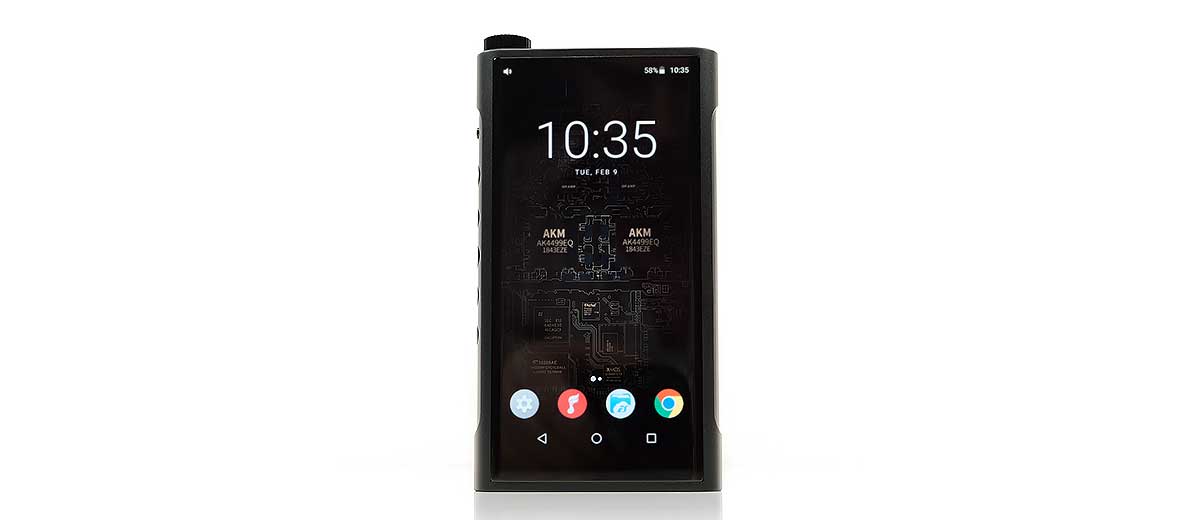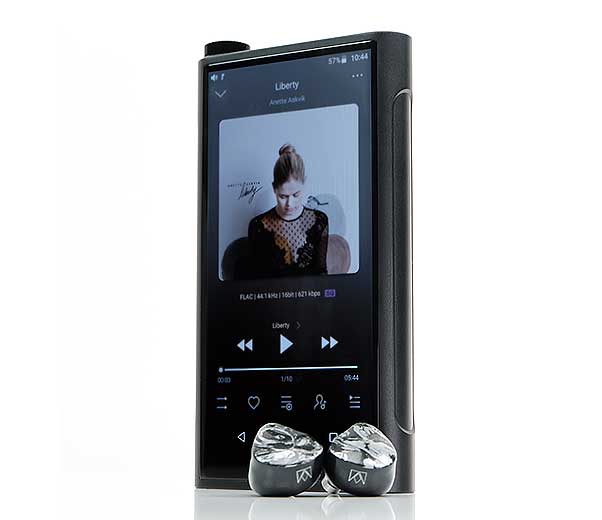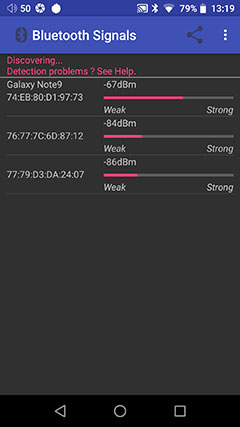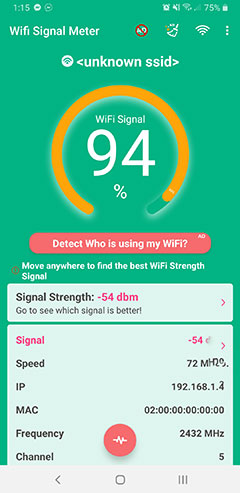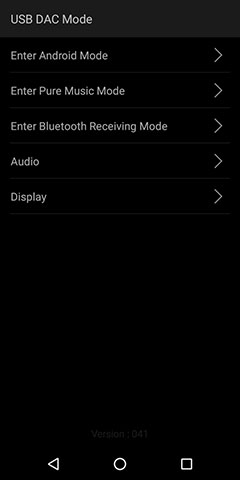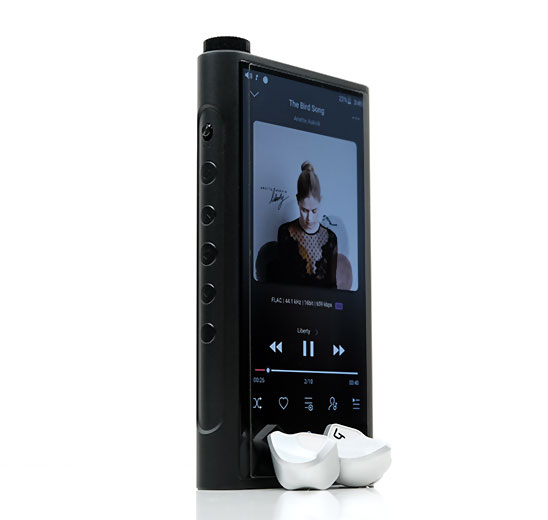FiiO M15 Sound Impressions
(Tested with Campfire Audio’s Andromeda, 64 Audio’s tia Trio, Final D8000 Pro, and Noble Audio’s Khan.)
Summary
FiiO has not strayed too far away from the M11 series overall tuning. However, they have refined it immeasurably and some of the little things that irritated me on the M11 have been dealt with nicely on the M15.
The first is the overall tone I was getting with the Khan and the Solstice – this is quite a neutral and airy presentation with a slight bias to the mids and treble but not hugely so. Compared to the M11, the micro-detail and harmonic balance is more pleasing and refined with a nice jump in the dynamic range.
The M11 is also edgier on the treble with a sharper overtone, stronger odd harmonics, and an upper midrange that could uncomfortably dominate. The M15 is much smoother and a little beefier through the mids but still retains a slightly forward upper harmonic order with our tested gear.
Vocals
Vocals are just as forward on the FiiO M15 but they are a little more natural-sounding than the M11 and also deliver a bit more body. Treble on the M15 is still ethereal in quality but it does not sound quite as brittle so percussion sounds the more accurate of the two for me on the M15.
Low-End
The low-end is quite neutral or linear for my tastes with our tested gear. Compared to the PAW 6000 and the Cayin N6ii motherboards it really does not carry a huge amount of body or weight into the mids. That does allow a bit more space for the mids to breathe so instrumental clarity and separation is excellent as is the spaciousness it delivers into the mids in our pairings.
When I switch back to a beefier signature, such as the PAW 6000 I can tell right away that the low-end weight slightly drowns out the lower-mids clarity and some vocal performance which the M15 deftly avoids.
This is a more natural sounding DAP than the M11 with a more refined treble, smoother beefier instrumental tone, and a much better dynamic range. However, the M15 is still neutral to slightly bright DAP ‘per se’ with a firm fix on resolution and articulation on a micro-level.
Timbre
The M15 does not do a whole lot wrong in terms of timbral coloration to be fair. It is not as philosophical as a Cayin creation with less fervor in delivering that ultimate tube or analog sound but neither is it a dry or overly analytical approach to tonal control. Ultimately, the M15 is about as reference as you can get from FiiO and that bodes well for those wondering how their gear will sound paired with the M15.
If anything and this is perhaps a contextual observation, the M15 does pick up a little more energy in the mids and treble due to the fairly linear low-end. That means instrumental timbre is on the lighter side with an odd-harmonic preference in percussion and vocals.
Nothing dense or rich like a Cayin E01/A01 timbral presentation, especially on the lower mids. Notes are a shade leaner, particularly when you try to tease out some percussion presence on treble happy monitors such as the Andromeda.
I actually found the weight to be quite suited to the tia Trio and with that over-ear headphone option turned on the Final D8000 Pro’s already reference-level sound is tailor-made for the M15 lack of overt timbral coloration.
Staging
I am definitely picking up a lot more complexity in the FiiO M15 airy staging signature compared to their previous DAPs. Some of that might be perceived because of the way they gently tease out the treble and upper mids a bit more but this is more nuanced than blatant.
What is also striking is that despite the lack of weight, the resolution and extension it can tease out on the low-end is top-notch.
That reference-level bias and lack of dominating low-end do allow spatial cues such as subtle bass guitar strikes to resonate really well from resolving gear that are designed to pick that up. The imaging in particular a lot stronger than the M11 with an airy unforced top-end quality.
I have to give credit to FiiO here for pushing down the noise levels really well on the M15. That blacker background on efficient monitors really does wonders for its dynamic range and my ability to pick out those tiny staging cues.
Wireless Performance
Streaming
The processor and 3GB RAM do make streaming a joy on the M15. Only your modem/router is going to hold you back from hi-res media wireless sharing.


TIDAL streaming was flawless though with V1.02 firmware was never entirely sure what bitrate I am playing at. A few chats with FiiO later and 2 results. The first is a local beta firmware upgrade that now shows the bitrate in the Android taskbar and second, that outside of the FiiO Music app, MQA is currently unfolded at 2X as opposed to 8X.
From within the local storage MQA playback via FiiO Music, the MQA status is clearly on display and works like a charm and you do get the full 8X experience, (see the grey or first picture above).
DLNA
FiiO encourages you to use their built-in DLNA service in the FiiO Music app but I think it is kind of basic in the service it provides. It is quite similar to the HiBy Music app built-in DLNA service and a little too list-based with not a huge amount of supplementary meta information such as album covers and artist bios.
My preference is for HiFi Cast or Plex (paid service) both of which have beautiful streaming interfaces rich with information. Since FiiO has introduced the Google Play Framework on firmware V1.02 it really opens up the possible DLNA apps you can use on the M15.
HiFi Cast, for example, does require Google to work and I have been longing to have that on the new M series DAPs for a while now. Now I can and it works flawlessly with Windows 10 and a Serviio Media server on my laptop.
Bluetooth
I have been testing the BT capability of the M15 a lot over the last 2 months in our TWS reviews as a measure of how well it holds a signal with various units. It is actually one of the better DAPs for signal stability and strength but still way short of a solid smartphone or BT5.0 source.
I did find it more stable than Lotoo’s BT implementation on the PAW Gold Touch but its range and distance paired to a lot of TWS units struggled a little before it hit 10m whereas on a smartphone such as the Note 9 it was a lot more stable.
At a distance of around 2m, I did compare it with the DX220 and N6ii and I can say on this test, (which we ran 3 times), the M15 did better for short to medium distance signal pickup. That may well be in the housing design, or the chipset implementation, or simply where exactly in the housing the chipset is located. A lot of factors but the M15 did perform better.
WiFi
The WiFi measurements showed no change from the M11 to the M15, exactly the same as a matter of fact. I am going to presume both have the same implementation inside for WiFi. It is pretty decent but not smartphone decent and you can see that in the additional strength signal on the Note 9 measurements.
That simply means you will not get the same range. Since the M15 is 2.4GHz/5GHZ capable it should be more or less effective at shorter ranges as a decent medium-range smartphone. The rest will come down to your router’s load capability for smooth streaming as the 3GB inside should be enough for a good level of buffering for hi-res DLNA streaming.
Wired Performance
OTG
For OTG audio, it also works just fine, (Tested with a Hugo 2 and Mojo) and can also be used as a transport for your main DAC. It is also not app-specific so both FiiO’s own Music app and the likes of HiBy’s Music app will interface on OTG digital audio on the M15.
Personally, given the output power and decoding capability of the M15, I would not find a general need to use the OTG route. The Hugo 2 would be fine as a standalone transport but in terms of power, it can outwork the Mojo with its 800mW capability.
USB DAC
The USB DAC setup on Windows 10 Home Edition was plug-and-play for me so quite seamless out of the box. You will need drivers from the FiiO support website if you are running older Windows versions.
The M15, however, will not automatically go into USB DAC mode. Nor is it switchable from the USB option drop-down menu. You do have to go into the main settings and opt for USB-DAC mode for it to switch over. You also cannot combine USB DAC mode with Pure Music mode which would have been one sweet setup.
The last critique is the new beta firmware insertion of the sample rate in the notifications bar does not work for USB DAC mode but that is fine as it shows up on the main screen anyhow.
The M15 does have a very good jitter control system on its XMOS USB stage with the use of an NDK dual femtosecond oscillator system at 45.15 and 49.15kHz. This is not quite a full femtosecond clock system like the DX220’s 5 oscillator deployment with a further 2 before the CPU and 1 at the DAC. However, it is deployed where it needs to be at the USB stage for most of the jitter control.
As for media sync, no such issues. The M15 is rock solid for audio sync to media files both hi-res and YouTube. Also, I did not text any additional noise creeping in via the USB connection. Hiss or a lack thereof was the same low-level as the regular standalone DAP performance.
Synergy
Monitors
First up, noise. FiiO has made a big deal out of their two power level settings specifically for sensitive and demanding alike. I just wonder if this is the old Turbo option rebranded. It is still a logical and more sensible explanation.
Anyhow, what you need to know is that out of the box the FiiO M15 is quiet, quieter than the M11 but not as quiet as the Lotoo PAW Gold Touch or 6000. Using the Solstice, which is a customized Andromeda, I honestly felt the noise floor was quite low.
With the Solaris, hiss was more easily detected at low volume, even when using the unbalanced output. So, it is not quite pitch black but it is definitely a quieter device than the M11 and not as pervasive. Moving up to the Noble Audio Khan the background was pitch black which is just perfect for me.
Pairings
In terms of pairings, I gravitated more to natural soundings monitors than bright or clean signatures. The M15 top-end has just a slight bit more prominence that for me, doesn’t quite suit the likes of the feisty Noble Khan. I would hesitate to pair the M15 with bright monitors if the objective is to add some wetness to the sound signature.
Nor does the M15 quite have the forwardness or density on the low-end to make the Solaris sound explosive enough. For those types of signatures, I would be looking at the Cayin N6ii/E01 combo or the PAW 6000 which are better for low-end weight and slam.
However, for the likes of the Gaudio Nair or the more organic and warmer Empire Ears Phantom where I am either looking for a reference level performance, (Nair), or trying not to overwork the low-end, then the M15 is perfect. There is also enough power and dynamic range in the M15 to pair very well with the Wraith and the VE Elysium, two electrostatic monitors that do enjoy decent voltage levels.
Headphones
This is the really interesting side to the M15, perhaps more so than monitor pairing. It is rare you get a portable DAP with up to 800mW into a 32Ω. Most of the good ones really come up short at 500-600mW balanced into the same load.
FiiO has converted its old Turbo boost technology into an ‘over-ear headphones’ branding and put some serious weight into a performance that makes the M15 one of the most suitable DAPs for demanding headphones.
Dan Clark Audio Ether 2
One particular pairing I enjoyed with the M15 was the Dan Clark Audio Ether 2 (balanced 4.4mm output). The Ether 2 has a relatively thick and close-sounding presentation with a bit of top-end fade which I would loosely term as a relaxed treble performance.
The M15 in balanced without the additional boost option sounds ok actually on high-gain but I am pushing close to 70 on the volume. With balanced non “over-ear headphones” off I am getting a solid 632mW but I usually prefer closer to 1W for the Ether 2 to start sounding optimal. I get a cleaner top-end but the low-end lacks a bit of definition and can sound overly polite.
With the boost option turned on the low-end is better defined on the Ether 2 and it is not just a case of pushing up the volume to get there either. There is a certain softness in the bass delivery that disappears with the ‘Over-Ear Headphones’ mode. I also hear a bit more staging width and richness in higher-pitched vocal delivery to go along with it.
Final D8000 Pro
It is not just balanced that gets a welcome boost but also unbalanced. With the easier-to-drive Final D8000 Pro, which only comes with a 3.5mm or 6.35mm unbalanced OFC cable the stock power setting sounds a little subdued, particularly in the mids which feel a little closed in and lacking in air.
With the boosted output, you can detect a lift in the dynamic range with more headroom, better treble presence, and a tighter midrange delivery. Instrumental notes have more snap to them and vocal texture sounds much more detailed than before.
Click On Page 4 below for Comparisons & Verdict

